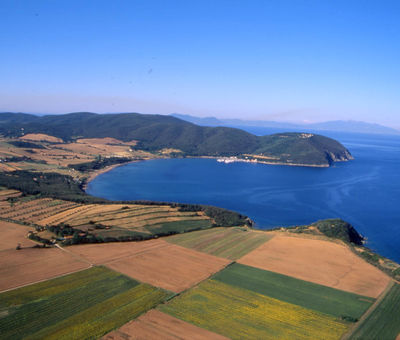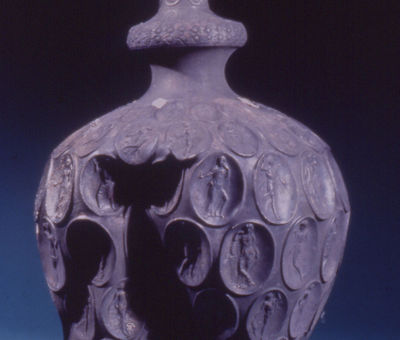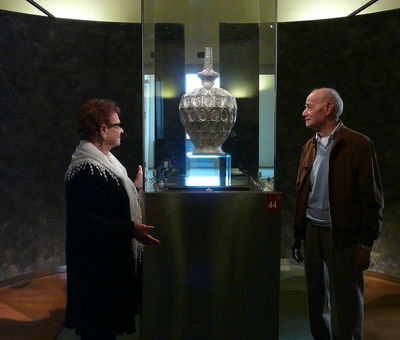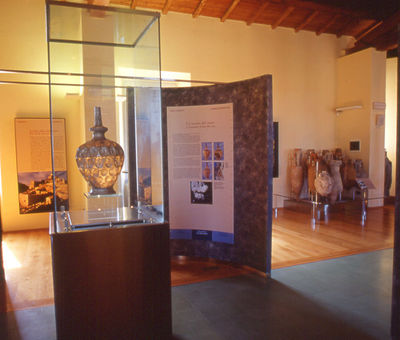La bella Michelina
It was springtime, March 1968, when Gaetano Graniero’s fishing boat, La Bella Michelina, was out on the water in the Golfo di Baratti, and brought back a strange object in its nets. Something rather similar to a flask, covered in limescale and deformed.
Just think about the dismay of poor Graniero, a fisherman who’d moved to Livorno with his wife. He was, like so many others, driven by a single worry: how to respectably support a family with no fewer than nine children.
A rusty bucket
“A rusty bucket” – he didn’t mince words; this is how he defined it – “that I didn’t think was anything important. If it’d been up to me, I would have thrown it back in the sea! But the men I was with, when we got back to the port of Livorno, ended up taking the object to the bar where they typically went, intent on showing it to everybody”.
This was how the strange vase ended up in the hands of someone who understood early on that the “bucket” was actually something precious. Gaetano’s wife, who’d learned of its importance, decided to track down the new owner of the amphora and, after he refused her offer of money, she took it back home.
“Even though it was totally dirty, I liked it and wanted to keep it in our house. I set it underneath the cradle of our youngest baby,” imagining that the divinities glimpsed under the crusty film on the bucket could somehow protect the child.
A gift of inestimable value
The Graniero couple didn’t know what was written in Law 1089/39, which established that any found objects of artistic, historical, archeological or ethnographic interest had to become property of the State, or that anyone who found them needed to file a report with the authorities. The Graniero family neglected to do this.
A friend of theirs, however, who had intuited how important the object was, had them write to the then-President Giuseppe Saragat, communicating the exceptional discovery and the intention to offer it as a gift to the President.
The hope was to be able to get some kind of recognition—but instead, since he hadn’t alerted the authorities previously in any way, the fisherman risked being accused of theft. The incident was serious and after around 5 days, the Nucleo di Polizia Tributaria, the police body, entered the Graniero home and seized the object.
The Soprintendenza di Firenze established that it was an amphora of great archaeological and artistic interest, made of nearly pure silver. It was an extraordinary piece, unique in the world. After almost 5 months the Magistrate of Livorno issued the sentence: the fisherman Gaetano Graniero couldn’t be accused of theft because he had revealed the discovery to the highest authority in the State, and the Italian finance police, the Guardia di Finanza, would then deliver the amphora to the Soprintendenza.
The symbol of the Museo Archeologico di Cittadella in Piombino
After a long restoration, the Baratti Amphora acquired an inestimable value. Since 2001, it has been part of the permanent collection at the Museo archeologico del Territorio di Populonia (Archaeological Museum of the Territory of Populonia) in Piombino, and today, with the myths and divinities on its medallions, it has become the institution’s icon.









